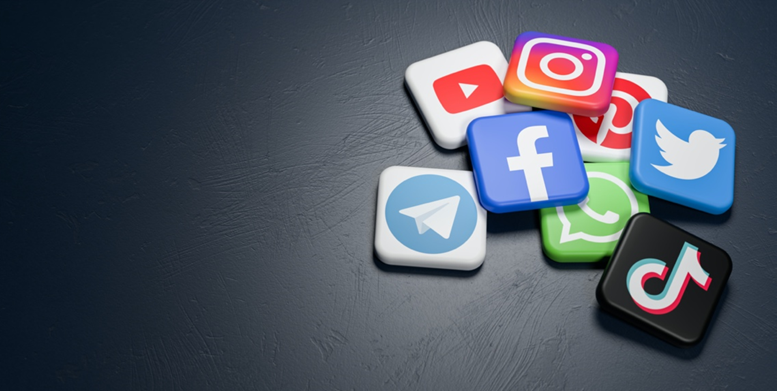Anyone can be the target of a cyber assault, and every day hundreds of computer systems are breached, usually for financial or another personal gain.
Over 40% of firms were victims of a cyber assault or breach in the last year, according to recent research. Both in-office and remote employees need to be able to recognize potential physical dangers and respond appropriately!
Since implementing the General Data Protection Regulation (GDPR), protecting organizations from the risk of a data breach has become more critical than ever. Companies risk severe penalties and irreparable harm to their reputations if they fail to meet their data protection obligations.
UK data breaches are estimated to cost businesses an average of £2.99 million. To avoid the severe penalties and reputational harm given out by the Information Commissioner’s Office (ICO), companies must take precautions to protect the personal information of their customers, clients, and employees.
This blog will help you safeguard your most valuable assets by highlighting security best practices and possible cyber threats.
What is Cyber Security and Why is it Important?
Cybersecurity is more vital than ever in the current day due to the pervasive use of cell phones, computers, and the internet. Cybersecurity is implementing procedures, policies, and safeguards to prevent attacks on computer systems, networks, devices, and data. The primary purpose of this technology is to safeguard sensitive data on computers, mobile devices, and the Internet.
Cybersecurity prevents harm to, or loss of, information or computer systems and networks through the Internet. Effective cybersecurity measures are becoming more crucial as technology develops and people depend on digital platforms for communication, employment, and pleasure.
The increasing number of data compromises worldwide is a serious concern that highlights the importance of cybersecurity. In 2022, there were 1802 cases of data breaches in the United States, which affected over 422 million individuals. Whether it’s data breaches, leakage, or exposure, all three incidents have one thing in common, which is that sensitive data is accessed by an unauthorized threat actor.
The largest data exposures worldwide have also been significant, with CAM4 experiencing a leakage of almost 11 billion records in 2020. The Yahoo data breach in 2013, which exposed around one billion records, was later updated in 2017 to three billion leaked records. In March 2018, India’s national identification database, Aadhaar, had the third largest data breach, exposing over 1.1 billion records.
With such a rapid rise in the data leakages and loss of sensitive data, it has become crucial for the individuals and businesses to implement cybersecurity best practices for protecting sensitive data from unauthorized access.
Cybersecurity can help you:
- Protect personal and sensitive information, such as credit card details and medical records, to prevent identity theft and unauthorized access.
- Prevent monetary losses by protecting data and preventing disruptions to operations.
- Safeguard essential infrastructure, including power grids, transportation networks, and communication systems, to avoid catastrophic effects on public health, safety, and national security.
- Maintaining uninterrupted operations is crucial for organizations, and cybersecurity is essential to protect against cyber threats.
- Protect intellectual property, such as trade secrets and patents, from disclosure or tampering.
- Comply with legal requirements for protecting sensitive information, avoiding legal repercussions.
Data-Driven Analysis of the Severity of Cyber Attacks
The frequency and severity of cyber assaults are shown by the following numbers, highlighting the need for strong cybersecurity precautions. Keeping up with cybersecurity concerns and prioritizing them is becoming more important as technology develops.
- Cybersecurity Ventures estimates that by 2025, global losses due to cybercrime will amount to $10.5 trillion annually.
- A data breach may cost a corporation an average of $3.86 million.
- In June 2021, data linked with 700 million LinkedIn members were released on a dark website, affecting over 90% of the service’s user base.
- About 80% of all security incidents are phishing attempts.
- There will be 3.5 million unfilled cybersecurity positions globally by 2021, according to Cybersecurity Ventures.
- In 2021, at least one cloud security issue affected 66% of businesses. (Sophos, our source)
This data on cybersecurity, along with their respective citations, presents cybersecurity as a sophisticated and sometimes intricate profession. Many businesses and people lack the knowledge and skills necessary to take adequate cybersecurity precautions.
The dangerous environment is dynamic; it is constantly shifting, and new threats are continually appearing. This makes it difficult for businesses and people to identify and respond appropriately to emerging cybersecurity risks.
Before we get into the best practices of cybersecurity to implement, ask yourself:
- Are the employees trained to recognize potential cyber threats?
- Is there a password policy that requires strong passwords?
- Are devices and software kept up to date?
- erattacks or data breaches?
- Is there a system for regularly backing up important data securely?
- Are remote access points secured with strong authentication and encryption?
The answer to these questions determine whether or not your business is at risk. If you’ve answered no to any of the questions above, read on to learn what you can do to mitigate the risk.
Cyber Security Best Practices
Cyberattacks often occur due to human mistakes. Weak passwords, following questionable links, and falling for phishing schemes are examples. The following are some guidelines that firms should take to reduce the likelihood of a breach of sensitive information:
Set up a Risk Management Regime
The first step in cyber risk management is to establish a risk management regime. A cyber risk assessment is a valuable tool for businesses to gauge their vulnerability.
Install or Improve Network Security
Put in place or enhance your network’s security measures by installing firewalls, antivirus, and anti-malware programs.
Use Strong Passwords
Passwords should be strong and not easily guessed by combining simple phrases or a single symbol. It’s essential to update your passwords routinely.
Avoid Public Wi-Fi
Don’t utilize public Wi-Fi since these networks are notoriously insecure and easy prey for hackers. Tethering your device to your phone’s mobile data or connecting it to a Virtual Private Network (VPN) is recommended.
Stay Safe on Social Media
Use the privacy settings to manage who may see what on your social media accounts, and never click on links sent to you by unknown individuals or accept friend requests from someone you don’t already know.
Improve User Education and Awareness
Raise the level of user education and awareness by teaching workers about the value of cybersecurity and the signs of intrusion.
Use Hard Drive & Media Destruction Services
Companies should use the hard drive and media destruction services to safely erase sensitive data from obsolete hard drives, CDs, DVDs, and other storage media.
Protect Smartphones & Other Devices
Smartphones and other gadgets need protection from cyber assaults just like computers and laptops. All company-owned devices should have strong password protection and anti-malware software installed.
Dangers of Cybersecurity and How to Avoid Them
Despite growing awareness of the importance of cybersecurity, many businesses and individuals struggle to implement adequate safeguards. One key challenge is a lack of understanding about the severity of cyber threats, leading to complacency and a delay in taking necessary precautions. Additionally, implementing comprehensive cybersecurity measures can be time-consuming and costly, which can be beyond the financial means of small organizations and individuals.
Know these most pressing cyber security dangers and how to counter them for protecting your consumers, clients, and business:
Phishing
The vast majority of cybercriminals resort to phishing as their primary method of attack. They trick consumers into visiting malicious websites or giving up personal information over email or social media. If an email seems somewhat suspect, you should verify the sender’s address.
Malware
Malware is an abbreviation for “malicious software,” which refers to software intentionally intended to harm. Malware may take various forms, and its functions might vary from espionage to code manipulation. Antivirus and antimalware programs are crucial for keeping your computer safe from viruses and other forms of malware.
Distributed denial of service (DDoS)Malware
Distributed denial of service (DDoS) is a type of cyber attack that aims to overwhelm a targeted system’s resources, preventing users from accessing it. Cybercriminals use a large number of compromised devices or computers to launch a coordinated attack on the target system.
To combat DDoS attacks, organizations should invest in network security measures such as firewalls, intrusion prevention systems, and content filtering. Additionally, organizations can use DDoS mitigation services that monitor and filter incoming traffic to identify and block attack traffic, allowing legitimate traffic to reach the target system.
Conclusion
Cybersecurity is crucial to the long-term health of any firm in the modern digital world. Securing your customers, clients, and staff is as important as securing your data and equipment. Implementing best practices may mitigate data breaches and the associated financial and reputational harm, identify possible risks, and train your personnel to address them. Keep in mind that there is no silver bullet for cyber security!
It calls for continual vigilance and the ability to adjust to changing circumstances. Therefore, maintain vigilance and a willingness to learn and enhance your cyber security procedures.






0 Comments